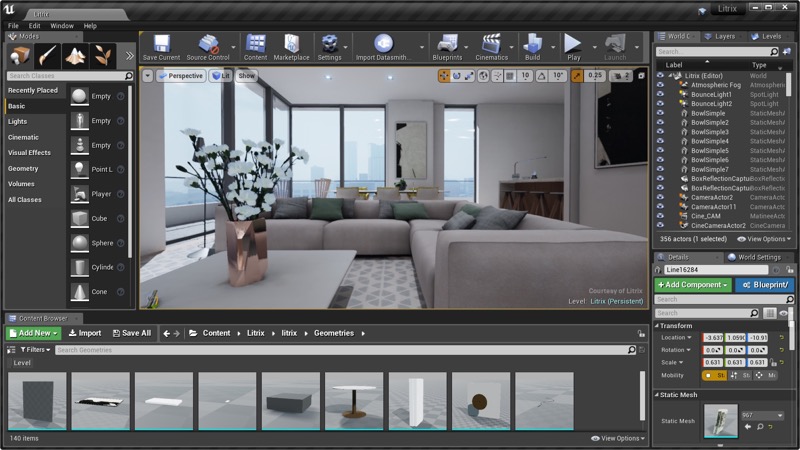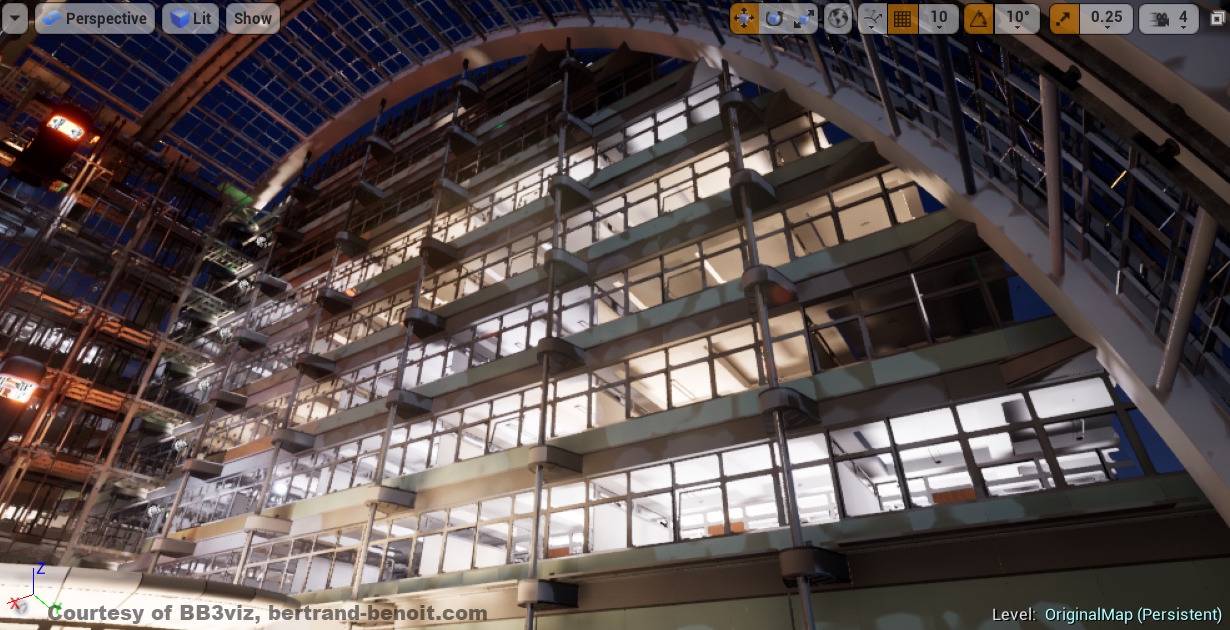Epic Games, the makers of Unreal Engine, have noticed in recent years that their visualization toolset is making huge leaps in popularity in the AEC space. That’s why they’re doubling down on the AEC market with the beta release of Unreal Studio.
Unreal Studio offers VR visualization tools that will appeal to users with all levels of expertise. For the less experienced user, it offers greatly simplified workflows for getting 3D models into VR as quickly and easily as possible. For more advanced users, it offers a platform that offers experimentation, freedom from vendors, and the ability to develop 3D visualizations that do exactly what you need them to.
Making VR easier in AEC
When I caught up with Marc Petit, general manager of Unreal enterprise at Epic Games, he explained that Unreal Engine is built around Epic’s recent Datasmith application. Datasmith was designed to offer AEC professionals a simple way to take a CAD design from any of 20 different applications (like 3DS Max) and bring it into virtual reality with a minimum of work.
The next part of Unreal Studio expands on this potential by including what Epic calls “assets” for easier and more realistic visualizations. In cooperation with Allegorithmic, which offers libraries of realistic looking materials in 3D visualization software, Epic has included simulations for over 100 common architecture and design materials. Petit says these assets will help you “get to your final results much faster,” and offer more realistic looking materials in your visualizations.

The Adobe Substance 3D library.
Epic has also included templates for producing specific kinds of VR visualizations. Petit explains that most VR experiences fit into a few standard patterns, like an immersive space the user can navigate, an x-ray tool that allows users to see through walls, or see the different parts of a mechanical object. Unreal Engine offers templates for many of these types of experiences to make them faster to produce.
The current beta release of Unreal Engine also includes a monitored discussion board for community problem shooting, as well as one-to-one ticketed support.
Bringing VR to the next level
Regardless of how popular VR visualization has already become in the AEC space, it’s clear that it still has a long way to go. Many of the AEC firms that could benefit from VR, Petit notes, are services companies that don’t have a big budget (or the time) for R&D. Though many of these firms appreciate the potential benefits of the technology, Petit admits that “it’s a lot of new concepts to wrestle to the ground while running a service business.”
To eliminate this barrier, Epic has packaged Unreal Studio with extensive tutorials and industry-specific learning tools, both of which will be updated on a regular basis. Epic believes these tools will offer users a low-fuss way to learn the fundamentals of creating custom VR experiences with the Unreal platform.

“We survey our users frequently,” says Ken Pimentel, a senior product manager at Epic Games. “One of the questions we ask is, How much experience do you have with Unreal? 50 percent of them are basically beginners, and of course, to get them successful we have to provide structured learning. That’s the stepping stone. You can fit this into your daily routine: you take a bit, you figure out that piece and then move on to the next, the next, the next.”
“We have to be able to grow their learning,” he continues, “if they’re going to take full advantage of what we’re offering.”
Make your own visualization tool
Pimentel explains that, as users develop their skills these educational tools they’ll start thinking of new ways to use Unreal Engine for real-time visualization—and this is what gets Epic most excited.
“We don’t want to be thought of a fast renderer,” Pimentel says. “That’s not our goal. Sure, that’s a side benefit of using Unreal, but we want users to focus on how you can create interactive experiences that explore certain design issues.” That means exploring, in real time, experimental design choices: What happens if we put this over there? What collides when this gets placed on the other side of the room?
“It’s a very big world of exploration that we unleash when users can build basically anything on top of our platform.”

It’s this last point that Pimentel emphasized during our chat. He was adamant that Unreal Studio should be thought of not as an application, but a platform. “There is no architectural visualization application we’re building for anyone,” he says. “We’re giving them a platform to do their own experimentation.”
Epic hopes this will end the days of buying a pre-made tools from a vendor, and then making lots of requests for features. “We’ll show you how to do some basic things,” Pimentel says, “but if you take the time to learn this platform, you’ll build anything you need. There are no technical barriers. The barrier is learning.”
Though Pimentel admits this approach is not for everyone, he remains bullish on the potential. “ You’d probably need more technical people than your traditional architect to explore that. However, a lot of firms want to go in there. They want to unlock that potential.”






